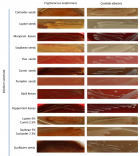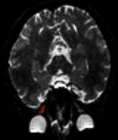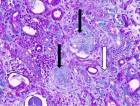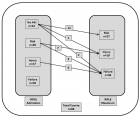Abstract
Research Article
Long-term results of 10 years of observation of cured cases of pulmonary tuberculosis
Bobokhojaev OI*
Published: 23 September, 2022 | Volume 6 - Issue 2 | Pages: 007-011
Aim of the study: Conduct long-term monitoring of recovered patients with pulmonary TB and study the frequency of relapses of pulmonary TB and factors contributing to their development in the Republic of Tajikistan.
Material and research methods: Of the total number of patients with pulmonary TB, 820 people in 2010-2011 after successful treatment, were transferred for further dispensary observation to PHC facilities, whose health status we monitored for 10 years (including 2020). Of the 820 patients, we were able to track the health status for 10 years in 622 patients (320 men and 302 women, age groups 19-44 years old - 330 people and 45-69 years old - 292 people). The rest - for various reasons were lost from further dispensary observation. All patients in PHC facilities annually during the period of dispensary observation underwent clinical, instrumental, laboratory, and X-ray examinations to exclude the recurrence of TB. Data for each patient were tracked using the National TB Registry OpenMRS data.
Research results: The elimination of preventive anti-relapse measures in people with residual post-tuberculosis changes in the lungs led to an increase in the number of relapses of the disease. The analysis of the conducted studies shows that the incidence of relapses of pulmonary TB does not depend on the regions and the severity of TB burden, they often develop with insufficient follow-up after the end of treatment and inadequate preventive measures in dispensaries patients.
The study of the reasons for the development of relapses makes it possible to timely identify a group of patients who need anti-relapse measures and prolongation of dispensary observation.
Conclusion: Thus, the results of this observation revealed the occurrence of relapses within 10 years in 19.3% of cases. A retrospective analysis of the initial forms of the disease showed that relapses of pulmonary tuberculosis occurred more often in patients who had had fibrous-cavernous pulmonary tuberculosis, than in patients who had disseminated pulmonary TB, and less often after suffering infiltrative pulmonary TB. Relapses of the disease occurred more often in men aged 19-44 years.
The results obtained indicate the development of relapses of pulmonary tuberculosis has a statistically significant dependence on the form of the initial disease, the presence of RPTCL, comorbid diseases such as HIV, diabetes mellitus, COPD, and the regularity of taking anti-TB drugs. At the same time, it turned out that the social status of all patients with relapses corresponds to the level of poverty, which should also be taken into account.
Read Full Article HTML DOI: 10.29328/journal.jprr.1001036 Cite this Article Read Full Article PDF
References
- WHO Global TB Report 2021. WHO: Geneva. 2020. https://www.who.int/teams/global-tuberculosis-programme/data.
- WHO TB country profile Tajikistan. 2020. https://worldhealthorg.shinyapps.io/tb_profiles/?_inputs_&entity_type="country"&lan="EN"&iso2="TJ".
- Bobokhojaev OI, Mirzoeva FO, Akhmedov A. Modern ways of detecting and diagnosing pulmonary tuberculosis / Bulletin of the Institute of Postgraduate Education in Healthcare. -Dushanbe. 2017; 1:91-96
- Bobokhojaev OI, Sirojidinova UYu, Dzhumaev RR, Makhmudzoda IS. On the issue of reactivation of the tuberculous process / Avicenna Bulletin. Dushanbe. 2018; 2-3:20; 320-324.
- Bobokhojaev OI, Rajabzoda AS, Mirzoeva FO. The risks of tuberculosis and the effectiveness of chemoprophylaxis in migrant workers, residents of the Republic of Tajikistan / Tuberculosis and lung diseases. 2020; 1(98):16-21.
- Bobokhojaev OI, Osmanov A, Aliev SP, Radjabzoda AS, Avgonov ZT, Manonov ST, Denning DW. The Burden of Serious Fungal Infections in Tajikistan. J Fungi (Basel). 2019 Jul 21;5(3):68. doi: 10.3390/jof5030068. PMID: 31330914; PMCID: PMC6787594.
- Jo Y, Mirzoeva F, Chry M, Qin ZZ, Codlin A, Bobokhojaev O, Creswell J, Sohn H. Standardized framework for evaluating costs of active case-finding programs: An analysis of two programs in Cambodia and Tajikistan. PLoS One. 2020 Jan 27;15(1):e0228216. doi: 10.1371/journal.pone.0228216. PMID: 31986183; PMCID: PMC6984737.
- Azhar GS. DOTS for TB relapse in India: A systematic review. Lung India. 2012 Apr;29(2):147-53. doi: 10.4103/0970-2113.95320. PMID: 22628930; PMCID: PMC3354489.
- Toktorgazieva KA, Azykova AB, Kurmanova NK. Clinical and epidemiological characteristics of relapses of pulmonary tuberculosis according to the data of the Department of Pulmonary Tuberculosis ?2 of the National Center for Phthisiology / Science, new technologies and innovations of Kyrgyzstan. Bishkek. 2017; 8:36-41.
- Zong Z, Huo F, Shi J, Jing W, Ma Y, Liang Q, Jiang G, Dai G, Huang H, Pang Y. Relapse Versus Reinfection of Recurrent Tuberculosis Patients in a National Tuberculosis Specialized Hospital in Beijing, China. Front Microbiol. 2018 Aug 14;9:1858. doi: 10.3389/fmicb.2018.01858. PMID: 30154770; PMCID: PMC6102324.
- McIvor A, Koornhof H, Kana BD. Relapse, re-infection and mixed infections in tuberculosis disease. Pathog Dis. 2017 Apr 1;75(3). doi: 10.1093/femspd/ftx020. PMID: 28334088.
- Shen X, Yang C, Wu J, Lin S, Gao X, Wu Z, Tian J, Gan M, Luo T, Wang L, Yu C, Mei J, Pan Q, DeRiemer K, Yuan Z, Gao Q. Recurrent tuberculosis in an urban area in China: Relapse or exogenous reinfection? Tuberculosis (Edinb). 2017 Mar;103:97-104. doi: 10.1016/j.tube.2017.01.007. Epub 2017 Jan 31. PMID: 28237039; PMCID: PMC5638046.
- Velayutham B, Chadha VK, Singla N, Narang P, Gangadhar Rao V, Nair S, Ramalingam S, Narayanan Sivaramakrishnan G, Joseph B, Selvaraju S, Shanmugam S, Narang R, Pachikkaran P, Bhat J, Ponnuraja C, Bajaj Bhalla B, Shivashankara BA, Sebastian G, Yadav R, Kumar Sharma R, Sarin R, Myneedu VP, Singla R, Khayyam K, Mrithunjayan SK, Jayasankar SP, Sanker P, Viswanathan K, Viswambharan R, Mathuria K, Bhalla M, Singh N, Tumane KB, Dawale A, Tiwari CP, Bansod R, Jayabal L, Murali L, Khaparde SD, Rao R, Jawahar MS, Natrajan M. Recurrence of tuberculosis among newly diagnosed sputum positive pulmonary tuberculosis patients treated under the Revised National Tuberculosis Control Programme, India: A multi-centric prospective study. PLoS One. 2018 Jul 6;13(7):e0200150. doi: 10.1371/journal.pone.0200150. PMID: 29979738; PMCID: PMC6034867.
- Lambert ML, Hasker E, Van Deun A, Roberfroid D, Boelaert M, Van der Stuyft P. Recurrence in tuberculosis: relapse or reinfection? Lancet Infect Dis. 2003 May;3(5):282-7. doi: 10.1016/s1473-3099(03)00607-8. PMID: 12726976.
- Alekseenko SN, Drobot NN. Early relapses of pulmonary tuberculosis - epidemiological and economic problems. Modern problems of science and education. 2019; 2. Electronic resource. - Access site: https://science-education.ru/ru/article/view?id=28739 (date of access: 08/22/2022).
- Guerra-Assunção JA, Houben RM, Crampin AC, Mzembe T, Mallard K, Coll F, Khan P, Banda L, Chiwaya A, Pereira RP, McNerney R, Harris D, Parkhill J, Clark TG, Glynn JR. Recurrence due to relapse or reinfection with Mycobacterium tuberculosis: a whole-genome sequencing approach in a large, population-based cohort with a high HIV infection prevalence and active follow-up. J Infect Dis. 2015 Apr 1;211(7):1154-63. doi: 10.1093/infdis/jiu574. Epub 2014 Oct 21. PMID: 25336729; PMCID: PMC4354982.
- Kolomiets VM. Relapses of respiratory tuberculosis (features of development and rehabilitation of secondary tuberculosis) / St. Petersburg. 2014; 263.
- Rukosueva OV, Vasilyeva IA, Puzanov VA., Yaschenkova NM, Katulina NI, Zhidak TN. Features of the course and diagnosis of relapses of pulmonary tuberculosis / Tuberculosis and lung disease. Moscow. 2011; 7:138-139.
- Sagalbaeva GZh, Mordyk AV, Kortusova LN, Evdokimenko SI. Causes of formation and structure of clinical forms of tuberculosis of early and late relapses of the disease / Tuberculosis and lung disease. Moscow. 2015; 5:163-164.
Figures:
Similar Articles
-
Avoiding confusion in high flow oxygen therapy conceptsGarcía G,Valencia P,Mercedes E, Sarhane Y,Díaz-Lobato S*,Agosta M. Avoiding confusion in high flow oxygen therapy concepts. . 2017 doi: 10.29328/journal.jprr.1001001; 1: 001-002
-
Acute and chronic changes in massive Barium Sulfate aspiration in an infant who subsequently was diagnosed with severe Gastro-esophageal RefluxSevgi Pekcan*. Acute and chronic changes in massive Barium Sulfate aspiration in an infant who subsequently was diagnosed with severe Gastro-esophageal Reflux . . 2017 doi: 10.29328/journal.jprr.1001002; 1: 003-008
-
Successful Therapy with intravenous gamma globulin in two children with postinfectious bronchiolitis obliteransSevgi Pekcan,Bahar Gökturk*, Ismail Reisli. Successful Therapy with intravenous gamma globulin in two children with postinfectious bronchiolitis obliterans. . 2017 doi: 10.29328/journal.jprr.1001003; 1: 009-012
-
Fluticasone furoate/Vilanterol 92/22 μg once-a-day vs Beclomethasone dipropionate/Formoterol 100/6 μg b.i.d. in asthma patients: a 12-week pilot studyClaudio Terzano*,Francesca Oriolo. Fluticasone furoate/Vilanterol 92/22 μg once-a-day vs Beclomethasone dipropionate/Formoterol 100/6 μg b.i.d. in asthma patients: a 12-week pilot study . . 2017 doi: 10.29328/journal.jprr.1001004; 1: 013-022
-
A decade of targeted therapy for non-small cell lung cancerKhalid Abu Ajaj*. A decade of targeted therapy for non-small cell lung cancer. . 2017 doi: 10.29328/journal.jprr.1001005; 1: 023-027
-
Successful treatment of late-onset pulmonary hypertension after atrial septal defect operation with macitentan: Our center experienceTarik Kivrak*,Zeynep Ulutas,Sena Sert, Bulent Mutlu. Successful treatment of late-onset pulmonary hypertension after atrial septal defect operation with macitentan: Our center experience . . 2018 doi: 10.29328/journal.jprr.1001006; 2: 001-003
-
Effect of diabetes mellitus on the Pulmonary Function Tests in Sudanese Diabetic PatientsElmutaz H Taha,Ibrahim A Ali*,Omer A Musa. Effect of diabetes mellitus on the Pulmonary Function Tests in Sudanese Diabetic Patients . . 2018 doi: 10.29328/journal.jprr.1001007; 2: 004-010
-
COPD and low plasma vitamin D levels: Correlation or causality?Luca Gallelli*, Erika Cione,Stefania Zampogna, Gino Scalone. COPD and low plasma vitamin D levels: Correlation or causality? . . 2018 doi: 10.29328/journal.jprr.1001008; 2: 011-012
-
Peculiarities of photon emisson of whole non-diluted human blood obtained from healthy donors and patients with some diseasesKirill N Novikov*,Vladimir L Voeikov,Ekaterina V Buravleva,Nadezhda G Berdnikova. Peculiarities of photon emisson of whole non-diluted human blood obtained from healthy donors and patients with some diseases . . 2018 doi: 10.29328/journal.jprr.1001009; 2: 013-019
-
Stethoscope - Over 200 yearsHenrik Permin*,Svend Norn . Stethoscope - Over 200 years . . 2019 doi: 10.29328/journal.jprr.1001010; 3: 001-008
Recently Viewed
-
Clinical and Histopathological Mismatch: A Case Report of Acral FibromyxomaMonica Mishra*,Kailas Mulsange,Gunvanti Rathod,Deepthi Konda. Clinical and Histopathological Mismatch: A Case Report of Acral Fibromyxoma. Arch Pathol Clin Res. 2025: doi: 10.29328/journal.apcr.1001045; 9: 005-007
-
Unconventional powder method is a useful technique to determine the latent fingerprint impressionsHarshita Niranjan,Shweta Rai,Kapil Raikwar,Chanchal Kamle,Rakesh Mia*. Unconventional powder method is a useful technique to determine the latent fingerprint impressions. J Forensic Sci Res. 2022: doi: 10.29328/journal.jfsr.1001035; 6: 045-048
-
Doppler Evaluation of Renal Vessels in Pediatric Patients with Relapse and Remission in Different Categories of Nephrotic SyndromeAmit Nandan Dhar Dwivedi*, Srishti Sharma, OP Mishra, Girish Singh. Doppler Evaluation of Renal Vessels in Pediatric Patients with Relapse and Remission in Different Categories of Nephrotic Syndrome. J Clini Nephrol. 2023: doi: 10.29328/journal.jcn.1001112; 7: 067-072
-
Atlantoaxial subluxation in the pediatric patient: Case series and literature reviewCatherine A Mazzola*,Catherine Christie,Isabel A Snee,Hamail Iqbal. Atlantoaxial subluxation in the pediatric patient: Case series and literature review. J Neurosci Neurol Disord. 2020: doi: 10.29328/journal.jnnd.1001037; 4: 069-074
-
Intelligent Design of Ecological Furniture in Risk Areas based on Artificial SimulationTorres del Salto Rommy Adelfa*, Bryan Alfonso Colorado Pástor*. Intelligent Design of Ecological Furniture in Risk Areas based on Artificial Simulation. Arch Surg Clin Res. 2024: doi: 10.29328/journal.ascr.1001083; 8: 062-068
Most Viewed
-
Evaluation of Biostimulants Based on Recovered Protein Hydrolysates from Animal By-products as Plant Growth EnhancersH Pérez-Aguilar*, M Lacruz-Asaro, F Arán-Ais. Evaluation of Biostimulants Based on Recovered Protein Hydrolysates from Animal By-products as Plant Growth Enhancers. J Plant Sci Phytopathol. 2023 doi: 10.29328/journal.jpsp.1001104; 7: 042-047
-
Sinonasal Myxoma Extending into the Orbit in a 4-Year Old: A Case PresentationJulian A Purrinos*, Ramzi Younis. Sinonasal Myxoma Extending into the Orbit in a 4-Year Old: A Case Presentation. Arch Case Rep. 2024 doi: 10.29328/journal.acr.1001099; 8: 075-077
-
Feasibility study of magnetic sensing for detecting single-neuron action potentialsDenis Tonini,Kai Wu,Renata Saha,Jian-Ping Wang*. Feasibility study of magnetic sensing for detecting single-neuron action potentials. Ann Biomed Sci Eng. 2022 doi: 10.29328/journal.abse.1001018; 6: 019-029
-
Pediatric Dysgerminoma: Unveiling a Rare Ovarian TumorFaten Limaiem*, Khalil Saffar, Ahmed Halouani. Pediatric Dysgerminoma: Unveiling a Rare Ovarian Tumor. Arch Case Rep. 2024 doi: 10.29328/journal.acr.1001087; 8: 010-013
-
Physical activity can change the physiological and psychological circumstances during COVID-19 pandemic: A narrative reviewKhashayar Maroufi*. Physical activity can change the physiological and psychological circumstances during COVID-19 pandemic: A narrative review. J Sports Med Ther. 2021 doi: 10.29328/journal.jsmt.1001051; 6: 001-007

HSPI: We're glad you're here. Please click "create a new Query" if you are a new visitor to our website and need further information from us.
If you are already a member of our network and need to keep track of any developments regarding a question you have already submitted, click "take me to my Query."


















































































































































